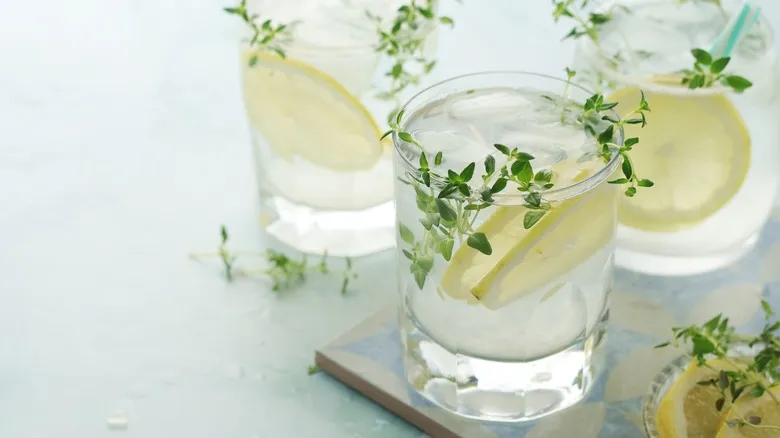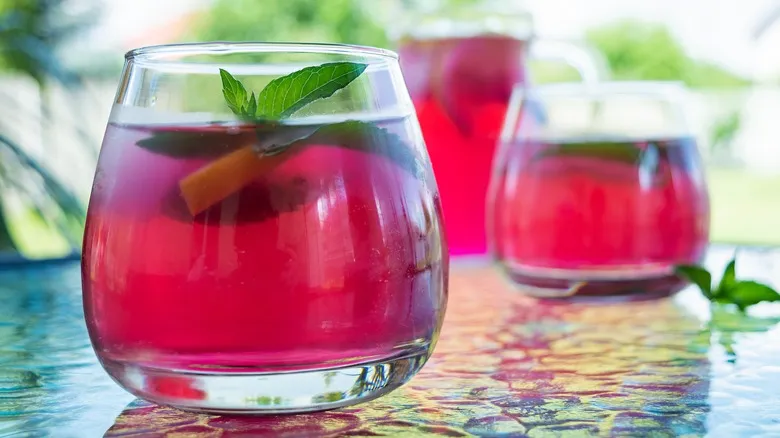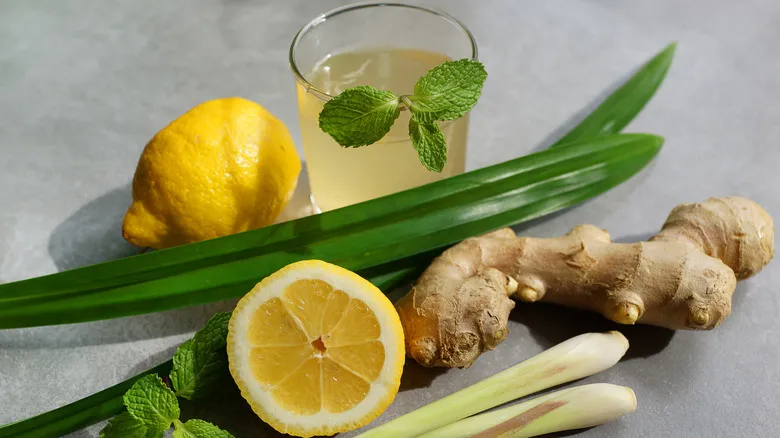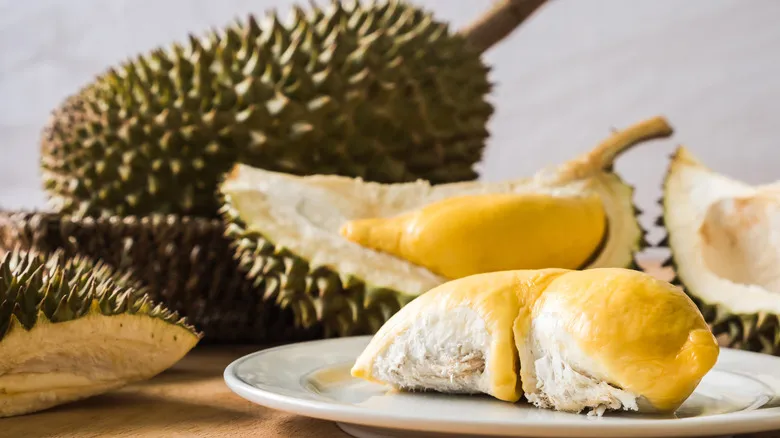Mint for extra coolness

Both peppermint and spearmint work well for this recipe. Take a handful of leaves (about five to ten, depending on your desired mintiness) and place them at the bottom of your glass. Use a muddler to gently press the leaves to release their essential oils, which are the source of the vibrant flavor and aroma you’re aiming for. Next, add a generous amount of ice and pour in your lemonade. Stir thoroughly, and you’ll have a refreshing minty lemon drink ready to enjoy.
What makes mint lemonade particularly invigorating is menthol, the compound that creates the distinctive cooling sensation associated with the herb. This compound tricks your taste buds into sensing a chill, even when there isn’t one. Combine that with ice-cold lemonade, and you have the perfect summer refreshment in a glass.
Pro tip: Consider replacing regular water with sparkling water or club soda to create a mint sparkling lemonade. This will give you a delightful fizz on your palate, followed by a refreshing wave of cool mint and tangy lemon. Just be cautious of brain freeze from the icy drink and bold flavors!
Lemon thyme for a touch of citrusy spice

Although lemon thyme is more challenging to find than regular thyme (which can suffice in a pinch), it adds a unique twist to your lemonade. You can identify this herb by the yellow specks on its leaves. Its name and distinctive look reveal its secret: a subtle citrus flavor that complements the classic, earthy notes of thyme. As you might imagine, the herb's natural lemony essence pairs beautifully with lemonade.
For an individual serving, simply muddle the leaves in a glass, pour in some iced lemonade, stir, and enjoy. If you're entertaining a group, however, it’s much easier to prepare a lemon thyme simple syrup instead of muddling each glass. To make the syrup, simmer fresh lemon thyme with sugar and water in a saucepan until the sugar dissolves. Strain out the leaves, and you’ll have a fragrant syrup to mix into a pitcher of lemonade, enhancing both its sweetness and flavor. This method can also be applied to mint and other herbs in the future. Regardless of your choice, the outcome will be a delicious, refreshing summer beverage.
Rosemary to get a Mediterranean-esque drink

Rosemary, hailing from the sun-drenched Mediterranean, pairs wonderfully with a refreshing pitcher of lemonade. This sun-loving herb infuses your drink with a distinctive, woody fragrance that enhances its overall richness and complexity. The piney notes create a delightful contrast to the tangy sweetness of the lemonade, while its strong herbal aroma offers a refreshing change from the typical zesty scent of fresh lemonade.
You have two options for infusing rosemary into your drink: you can either muddle the rosemary directly into your beverage or prepare a rosemary simple syrup on the stove to mix in. Once you're ready, you can either place a whole stalk of rosemary in the glass or chop the herb into two or three pieces and let them float on top of the lemonade. While they may not significantly alter the flavor, they will add a visually appealing touch, and you'll enjoy the fragrant aroma of fresh rosemary with every sip.
Purple basil for a colorful twist

Here’s a unique take on basil lemonade: Try using purple basil (often referred to as "red basil") instead of the usual green herb for a delightful homemade herbal pink lemonade. In terms of flavor, it shares similarities with traditional basil but is less sweet and boasts a more herbal profile. Fortunately, purple basil is milder, making it an excellent choice if you prefer a subtler herb in your beverage.
The striking color of the leaves is undoubtedly the highlight. Unlike the typical green, purple basil features a deep purple, eggplant-like shade due to the presence of a pigment called anthocyanin. When you infuse your lemonade with this basil, some of the pigment will seep into the drink, giving it a lovely pink hue. This is a fantastic way to add a touch of elegance to your lemonade without using artificial dyes. Infusing is straightforward and quite similar to using other herbs. You can either muddle the purplish oil from the leaves directly into your glass or create a pinkish simple syrup to sweeten and flavor your pitcher of lemonade.
Lemongrass if you like it sour

Just from the name, you can probably understand why we’ve added this herb to our list. With its vibrant lemon flavor and aroma, lemongrass is a perfect match for a glass of lemonade. However, infusing this herb into your drink is a bit different from the others on this list, as lemongrass isn’t a leafy herb — all the flavorful components are found in the stalk.
As always, you have two options for infusion. If you’re preparing a single glass, trim both ends of the lemongrass to create a thick stalk, then cut it into three or four pieces to fit inside the glass. Use a muddler to gently extract the essential oils, then mix with ice. For the boiling method, after trimming the stalk, simmer the pieces with sugar and water in a pot until you create a syrup (for an even more pronounced lemon aroma, you can add a few pieces of lemon peel).
Since you’re enhancing the citrus flavor here, the final drink will be quite refreshing. If it’s too strong, you can always dilute it with water or add more sweetener. Alternatively, you can balance the flavor by incorporating another herb! Mint is a fantastic choice. Muddle it into the lemonade, and the earthy notes and cooling sensation — combined with the zesty drink — will help you stay cool during the hottest summer days.
Recommended

Why Swiss Cheese Is So Holey

Does Ben & Jerry's Really Give Its Cows Massages?

What's Up With The Nitrogen In Ground Beef Packages?

2 Ways You Can Taste The World's Smelliest Fruit At Costco
Next up

